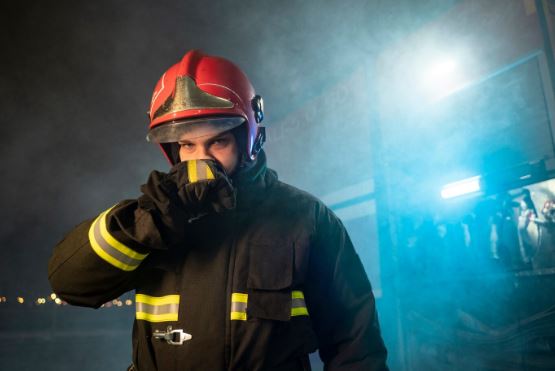Unseen Guardians: The Vital Role of Fire Watch in Protecting Life and Property
INTRODUCTION: Fire Watch – A Silent Protector in Our Communities
In the new millennium, with leaps and bounds in fire safety technology, we have often assumed that in most protected environments and communities, a fire alarm, sprinklers, and emergency exits are supposed to get us through. What is more, though seemingly unnoticed, is the fire watch. Fire Watch services offer the preservation of lives and property once standard firefighting systems go out of operation, are under maintenance, or when the fire hazard is extremely high. A construction site, an industrial plant, or a particular event watch is a vigilant and prompt response that works well as a reliable fire hazard line of defense.
What is Fire Watch, and Why is It Important?
Most people associate the concept of fire protection with smoke detectors and sprinkler systems. Fire watch, on the other hand, is an entirely different concept. Fire watch is actively patrolling an area by highly trained personnel to detect, prevent, and respond to potential fire hazards. They fill an essential gap when regular fire safety measures are unavailable or insufficient and make sure no fire risk goes unnoticed. The local fire codes and insurance regulations usually require fire watch services, especially in high-risk situations, such as when malfunctions occur in the system or when there are constructional activities.
History of Fire Watch
Fire watches go as far back as ancient days. Before fire safety systems developed into something complex, towns and cities assigned a watchman to look out for any fire outbreaks. Fire was a significant danger in the medieval cities, as those towns were primarily composed of wood, and the original fire watch warned the town when they saw a wisp of smoke. Even with the advent of technology, the core role of fire watch-safeguarding lives and property remains just as essential today.
How Do You Know When You Need a Fire Watch? Circumstances that Call for Increased Vigilance
Fire watch is not a service that is necessary only in extreme situations. There are several circumstances in which a fire watch team may need to be stationed on site, including but not limited to:
- System Failures or Maintenance: Wherever a building’s fire alarm or sprinkler system shuts down, fire watch is required to ensure that the area remains safe.
- Construction and Renovation Sites: These venues contain flammable materials and involve activities such as welding, which can risk fires.
- High-Density Gathering: In cases where crowd density is high, fire watch personnel are deployed to help counter the risk of fire spreading and evacuate in case it occurs.
- Industrial Environments with Higher Risk: Where chemical processes or high-heat processes are concerned, fire watch is always conducted because conditions are prone to fire.
Central Fire Watch Personnel Responsibilities
Observation only does not fulfill the role of a fire watch personnel. He is going to make the difference between a small or large disaster. The following are the responsibilities of fire watchers:
- Continuous Patrolling: Fire watch experts constantly patrol and scour the area for signs of smoke, fire, or electrical hazards.
- Immediate Action: They are trained to initiate emergency procedures, call the local fire services, and, as necessary, fight the fire and prevent its spread.
- Recording and Reporting: The fire watch officers record everything unusual that happens, which helps the building managers comply with the requirements and risk assessments for future events.
- Inspection Safety Equipment: Sometimes, they check if all fire extinguishing appliances, hoses, and emergency exits work and are always accessible.
- Being an advanced fire watch professional involves not only training in fire safety but also imparting the know-how of crowd control, evacuation protocol, and firefighting techniques, so it is really an asset.
Importance of Fire Watch in Today’s High-Tech World
Some may even argue in recent times, dependent on automated fire safety systems, that the fire watch is not required in the first place. However, fire watches have an intervention capacity that technology could never offer it takes a human eye to watch and monitor the property. A simple example here will do: where the alarm system malfunctions or breaks down; in some places, advanced technology may still be powerless against the erratic behavior of a human, such as mishandling flammable materials.
Indeed, a report from the National Fire Protection Association notes that in situations where the human oversight of fire watches is performed, the damage and loss of lives are dramatically reduced compared to when automation tools are used solely. Most importantly, fire watch offers a failsafe with which to fall back when technology fails and gives a personalized response to potential risks.
Construction and Fire Watch: Real-Life Examples
It could be an example such as this: recently, this same incident happened in a great construction site in the city, where welding and cutting happen every day. It is ensured with fire watch to keep it compliant and safe. Within weeks, the team would detect and prevent three potential fire incidents-smoldering debris, a spark that could ignite nearby wood, and overheating of a storage area. Upon each fire watch, the team acted immediately to prevent a possible fire case from spreading into residential areas.
Construction sites are always associated with heavy machinery, flammable materials, and dynamic workflows, creating a unique fire risk that requires extra care. Services on fire watch ensure that any overlooked or unexpected fire hazards are managed promptly and effectively.
Fire Watch – Protecting Public Spaces and Events
While thousands of guests may be attending concerts or big conferences in public spaces and open areas, a slight fire may take place, causing mass panic and injuries. Fire watch professionals are not only deployed to spot fires but also are skilled at managing crowds, evacuation strategies, and emergency management.
For instance, there was a lively outdoor music festival with fire watch teams spread across the venue. Halfway through the performance, a small fire erupted in the cooking area of a food vendor’s stall. The fire watch team extinguished the fire and prevented panic that could have engulfed thousands of concertgoers. Not only is peace of mind achieved with fire watch services, but the service to be an active safeguard for both the event organizers and attendees is ensured.
Future Trends in Fire Watch Services
The fire watch industry is changing with the advent of artificial intelligence and advanced fire detection technology. Technology has emerged as an enabler for the fire watch employee, but it doesn’t remove the factor of human judgment and action. Some of the trends emerging in the fire watch service include:
Integration with AI and Drones: Fire watch teams increasingly integrate AI to predict dangerous fire-risk zones. Fire watch teams also use drones for monitoring remote areas.
Comprehensive Training Programs: Fire watch personnel are now fully trained in fire safety as well as in emergency medical response preparedness.
Eco-Friendly Fire Protection: Fire watch services are embracing sustainability. Non-toxic materials and ways and means of dealing with fires have become the talk of the town.
Coupled with the conventional vigilance, it is the use of modern technology that has ensured that the fire watch service continues to provide its importance in fire safety.
Counter Arguments: Is Fire Watch Always Necessary?
While a fire watch has its value, the opposite view exists. Sometimes it is thought that with investment in state-of-art-fire-safety technology, the demand for persons doing fire watch is reduced. For example, fire suppression systems in the form of inert gas extinguishers and heat sensors are extremely efficient and are potentially capable of providing automatic responses.
Yet proponents of fire watch argue that such systems, as effective as they seem, are less adaptive in nature and cannot respond to changing conditions. Human alertness can adapt and then respond to risks dynamically-not necessarily something the system can always do.
Conclusion: Fire Watch – A Layer of Safety Beyond Technology
While flames continue to threaten lives, properties, and businesses, fire watch is a necessity. From its early historical roots as one of the primitive forms of fire safety service to its modern integration with technology, fire watch is as close to quintessential as a message about the meaning of vigilance can be. Fire watch professionals protect not just buildings but the lives and well-being of those who call them home.
When safety relies on technology, but human intervention is what counts, then the importance of a fire watch is a reminder that, at times, the best safety net is human innovation. Whether it is an under-construction area, a night of fun, or an industrial setup, these guardians are unseen, waiting, and ready to see that we are always safe even when hazards appear.






